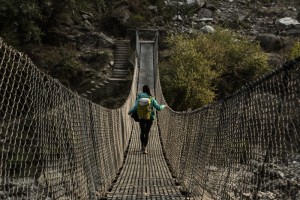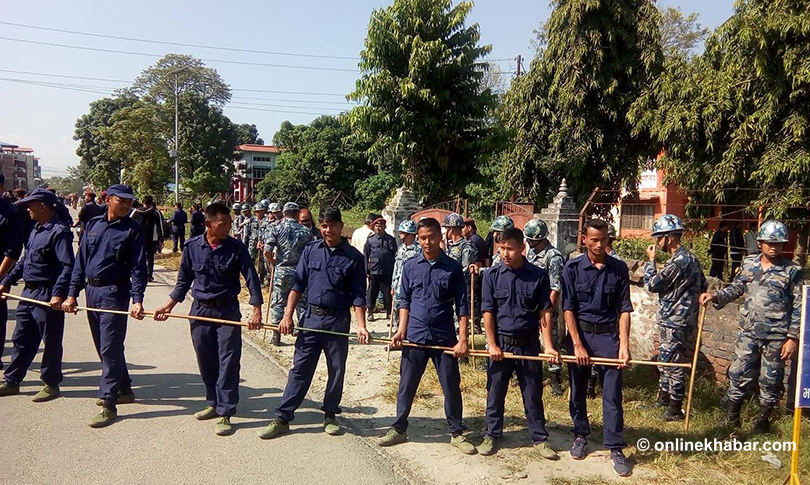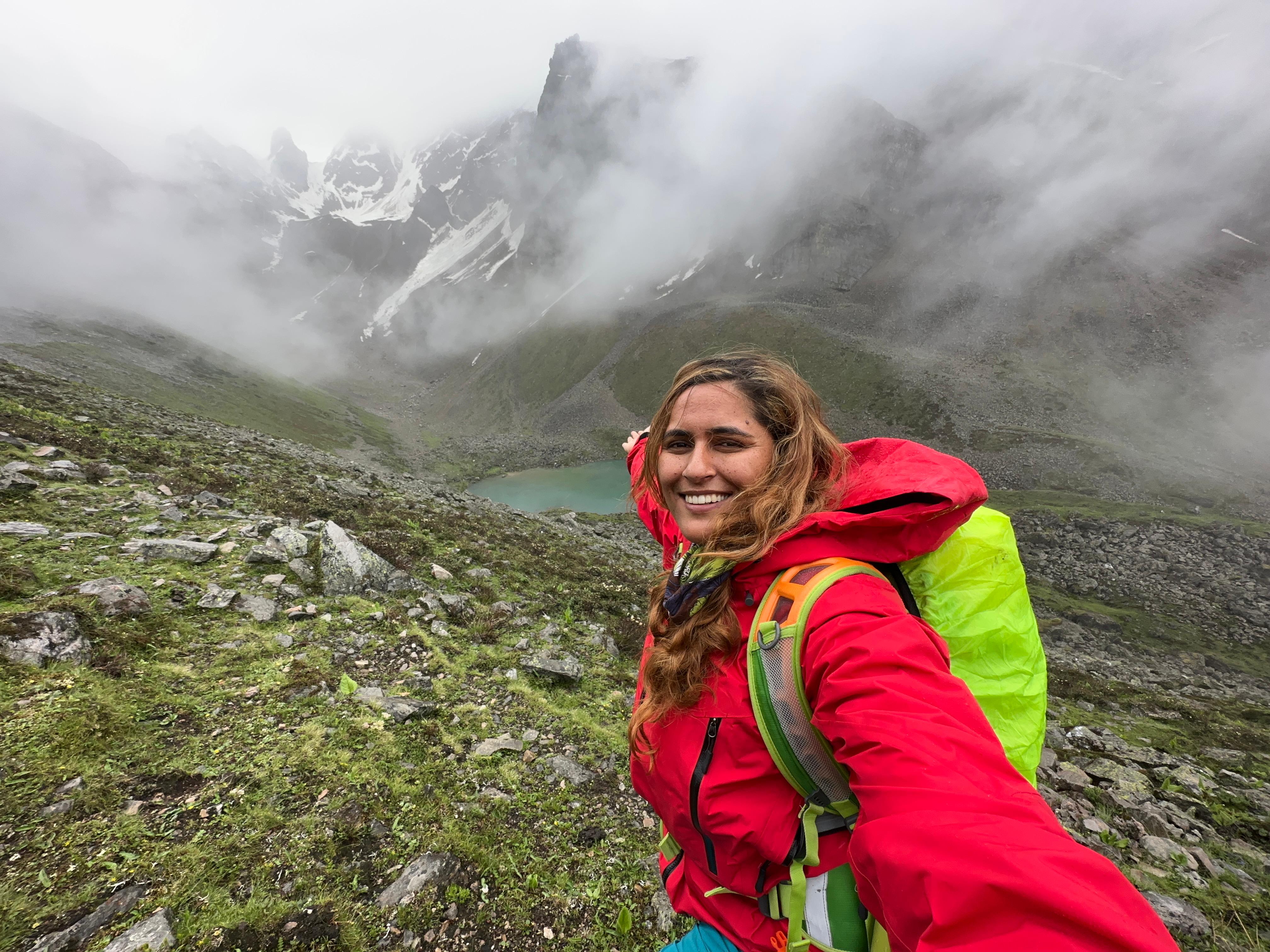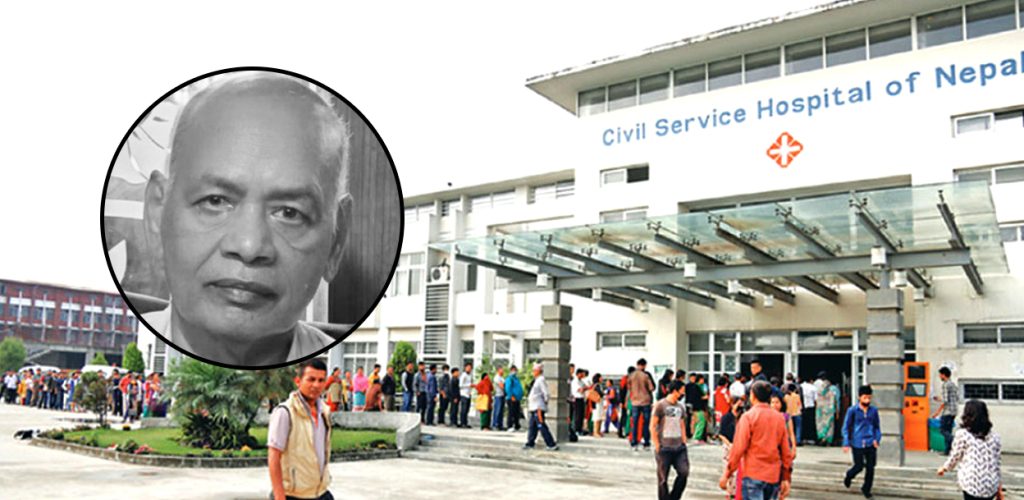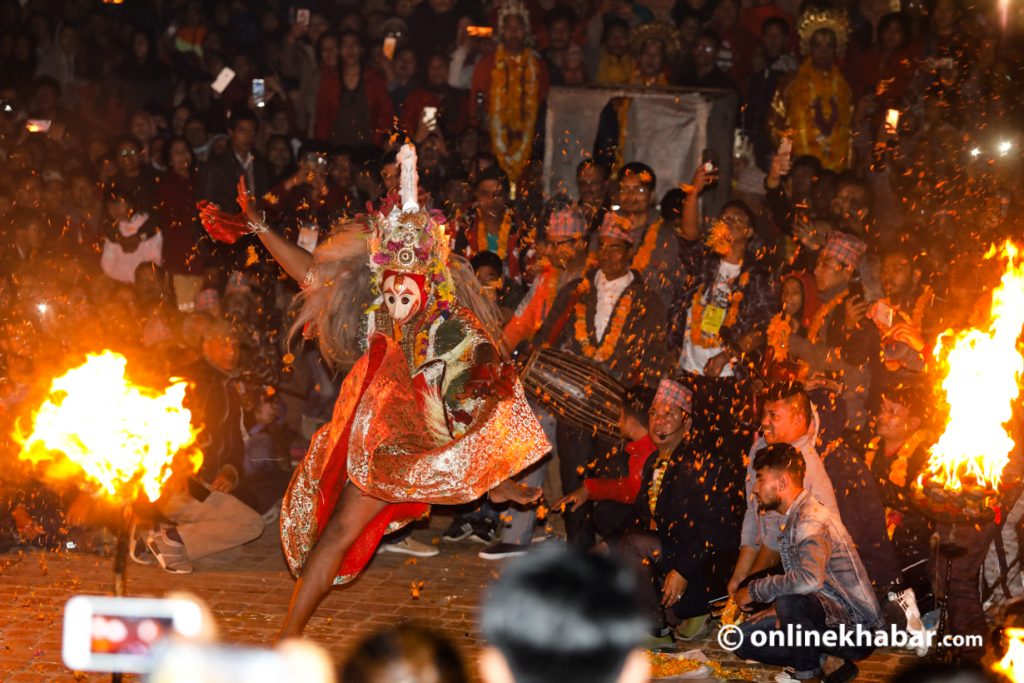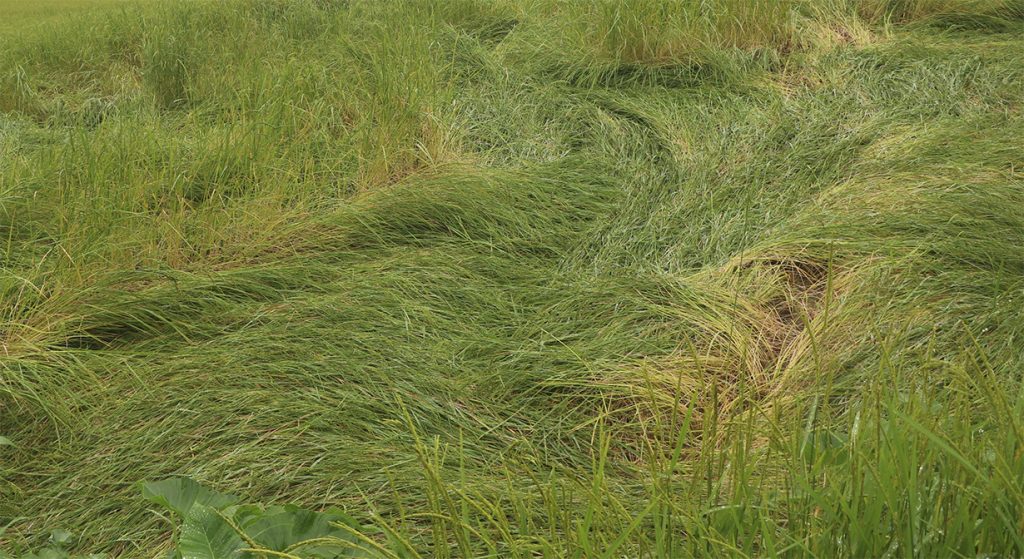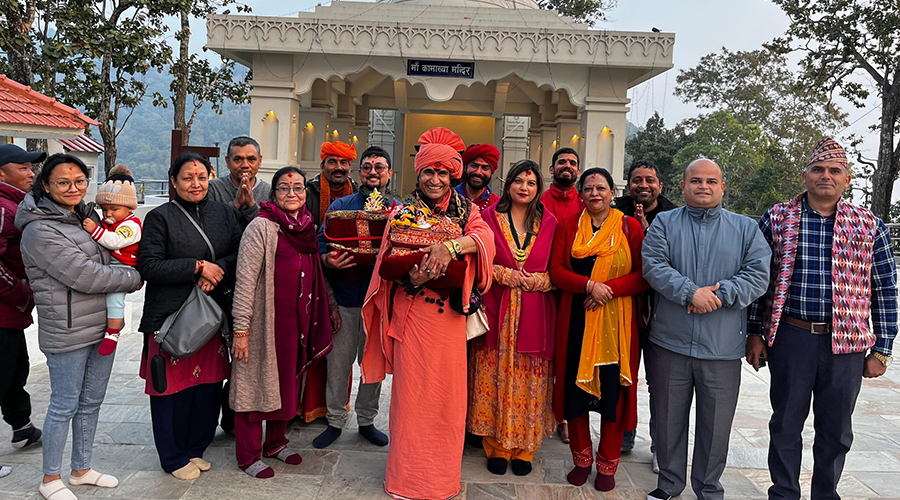(Read Part I)
The next day, it was already sundown when the main priest was done with the puja ceremony. Thunder sounded, and a slight drizzle began. At long notes of a bevy of conch-shells, the journey began. As the mass of devotees led by the main priest set off amidst a thunderous cacophony, the sound seemed to travel miles across the small village, mysteriously bouncing off the hills.
Chanting women stood by and bid farewell to their menfolk. “Time to join in,” called out Shishir to his partners, and they soon dissipated in the parading horde. For a casual city-slicker from Kathmandu, if he happened to be there, the entire sight before him of people heading into the rain with naked feet on that darkened hill would appear nothing short of an eye-deceiving spectacle.
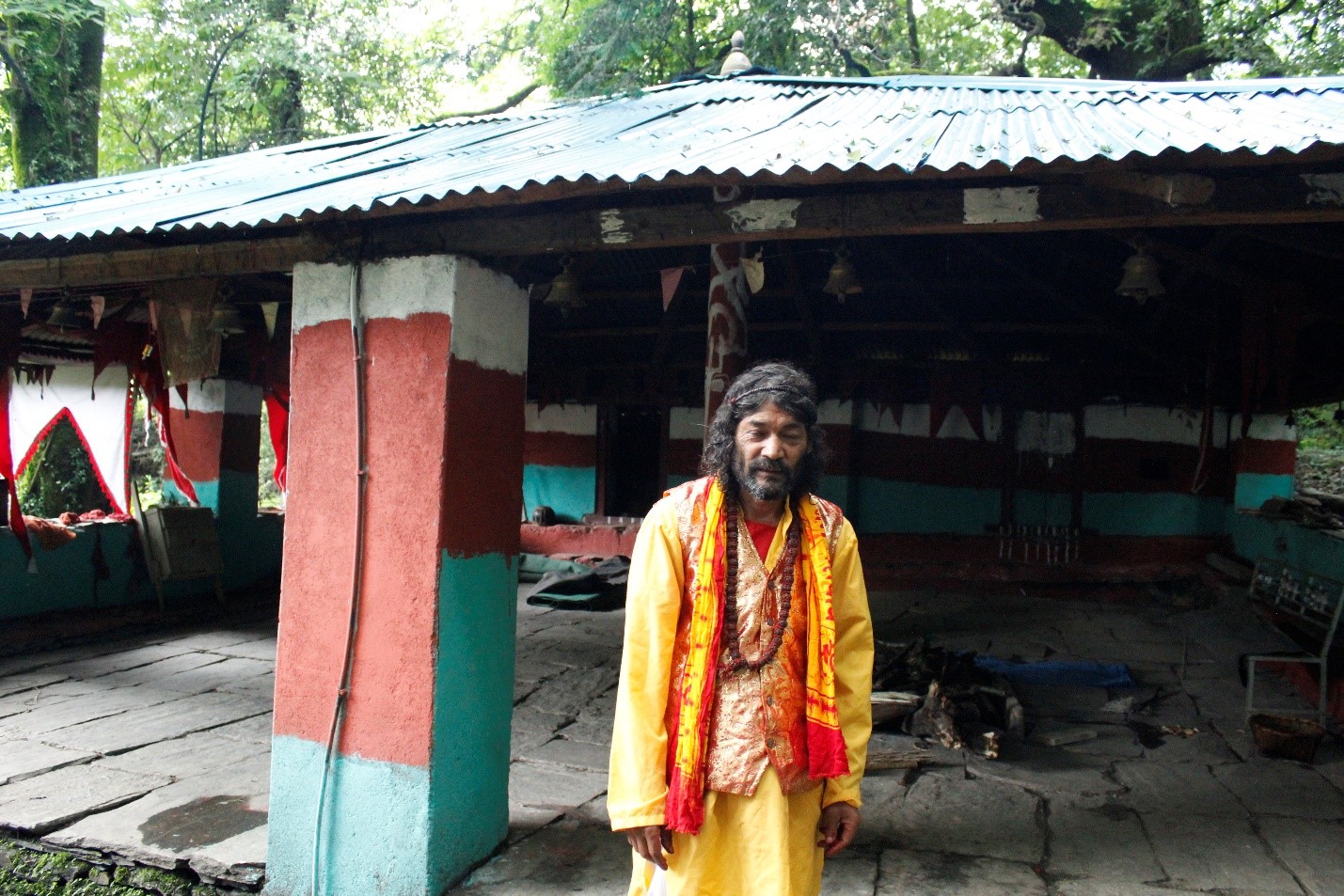
But it was real, true-to-life, and no two ways about it—heritage passed onto the rural folks from their forefathers for ages.
To the darkened hills
The epic walk kicked off led by the Mula (chief priest) with little regard to dark trails and unrelenting rain; pilgrims brought up the rear. The trail climbed wounding uphill. Amul, a tenderfoot, seemed to flounder on the wet, narrow, and slippery path for a firm foothold groping for handholds.
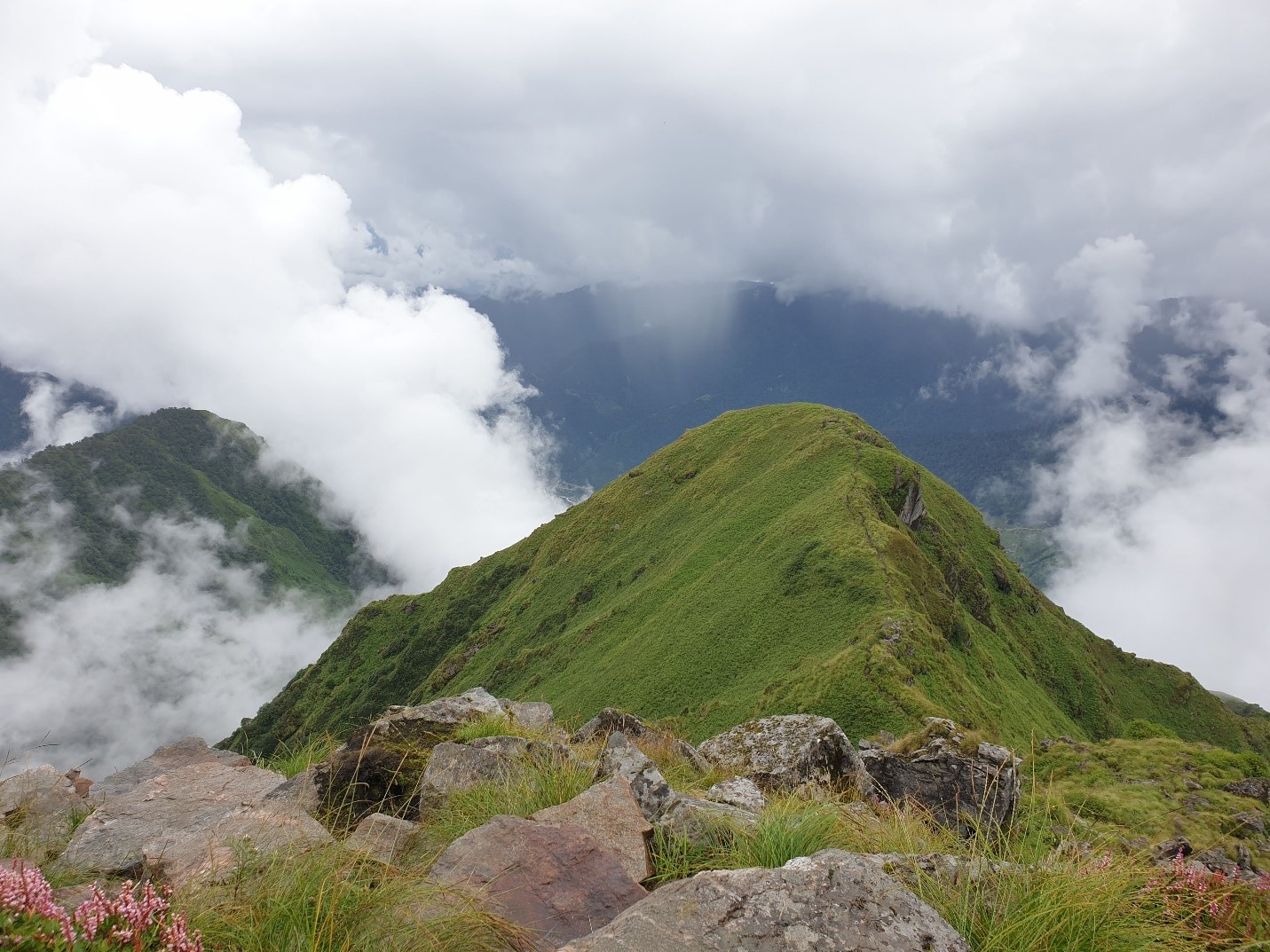
Shishir and Bijay seemed to take it in stride, though. Bijaya had travelled to almost all the districts in the far-west during his tenure at his respective workplaces and done a fair share of trekking to remote places. Shishir soon got the message; they were no match for the locals who seemed effortless and nimble on the steep climb. The trio heaved themselves up the narrow winding path muddy and slippery with slime.
Soon a colony of leeches began their assault gorging on their blood. The overgrown grass at most places made it difficult to walk in the beam of their flashlights. Often, they lost footing, barely escaping a fall. They clung onto the track, stoically accepting the challenge. As the caravan advanced, the lights from the village gradually receded into tiny specks.
The sight of popping flashlights inching up on the darkened hill seemingly appeared in perfect symmetry, evoking an uncanny air of mystique. Next, as the almost 300-strong long file of pilgrims negotiated the treacherous muddy trail up and down, they broke into a rallying cry of “cha ha, cha ha”—followed by the shrill horn of conch-shells, sounding eerie in the dead of night. And the shrill loud note tore through the stillness of the night. Cha ha, Cha ha.
The moving column of devotees, Shishir learned, would continue throughout the night. Such chivalry was not the trio’s forte. Little before midnight, Shishir and Bijay decided to camp for the night. Midnight struck, by the time they found a flat surface to pitch the tent.
After a hectic, disorganised, and confusing fumbling in the dark with rain pouring in, they finally managed to put up the tent at 3,190 m for the bivouac. Next, it was time for a much-needed food to ease their groaning stomach. They huddled together inside the tent to eat. They wolfed down lachhedar paratha (the kind you get in department stores of late) straight off the packet accompanied by shelf-stable chutney and crawled into their sleeping bags—cold and wet.
Despite the pitter-patter of the rain against the roof of the tent, there was no mistaking the faint sound of the marching feet punctuated by the trailing note of the conch-shell and the rallying cries. The rain continued to lash down relentlessly.
Day II
The last night’s gruelling climb, on their first leg of Surma Sarovar Yatra, seemed to tell on the threesome–Shishir, Bijay, and Amul–as they slept late that morning. By the time they awakened, it was eight. The rain stopped some time at night. The sun was up, and crisp weather with a hint of nip greeted them as they shuffled out their tent.
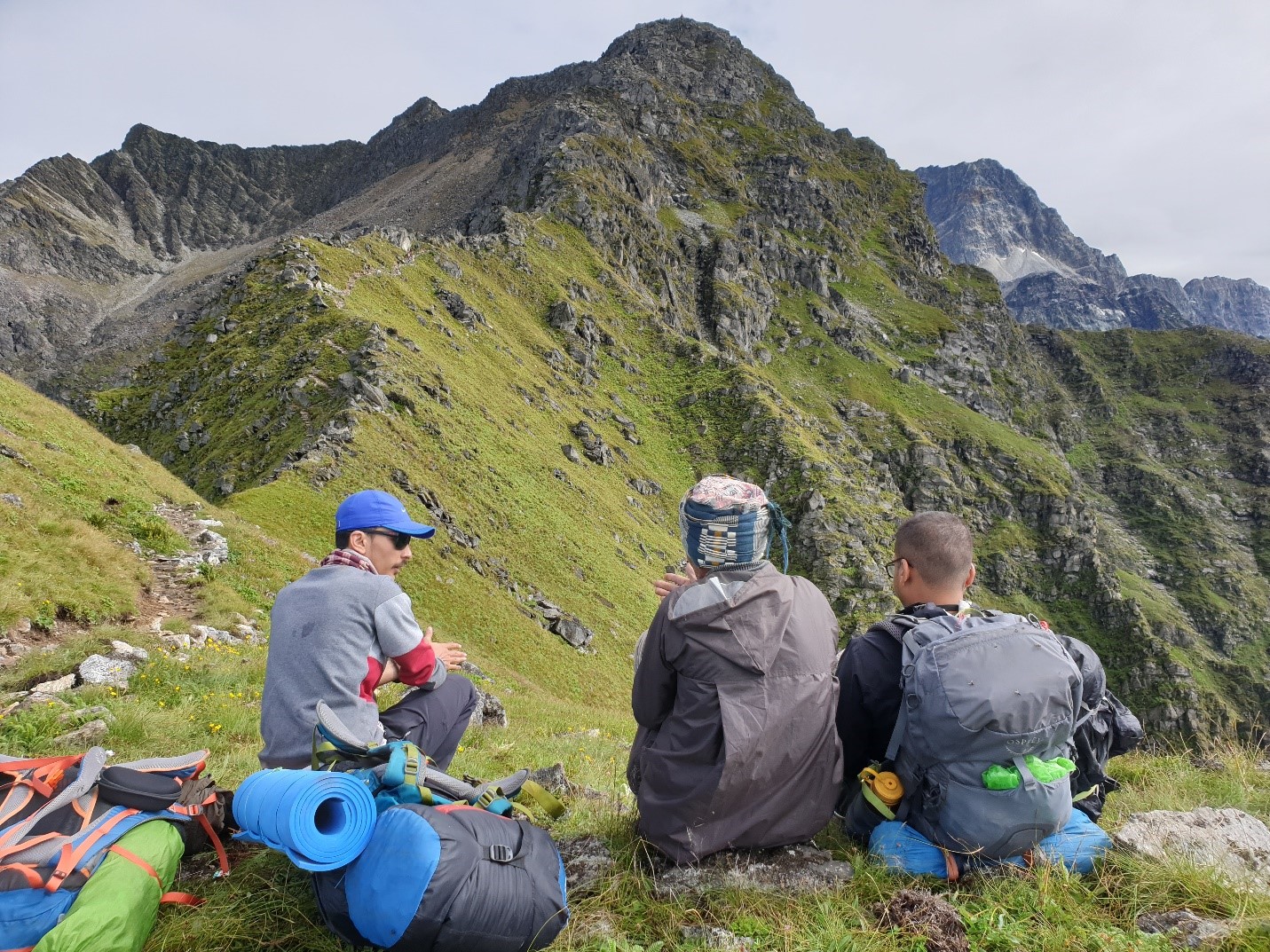
After a hurried dismantling of their tent and tucking away some leftovers of the previous night, they hit the trail. Soon, they caught up on higher elevation, and by the time they climbed to 3,500 m, the trees seemed to recede gradually replaced by grass and shrubland. As the trail led uphill, they wove their way in and out almost shoulder-high wild flowering plants.

Dharmashala
The morning vista with the rolling hills punctuated by towering mountains every way you looked and a penetrating blue sky skirted by fleecy cumulus white clouds was a soothing sight for both eyes and mind. The weather in the sub-alpine altitude can, mind you, take a mood swing in no time.
Next, they slogged it up a grassy knoll with a shelter built with stones and corrugated tin sheets for the roof, at 3,500 m. It was called Lotani Dharmashala, which served as a resting place for the pilgrims. They rested a bit and then resumed their climb, getting higher and higher. At about noon, they stopped, for lunch—chiura (beaten rice), dalmoth (dry snack), and Wai Wai noodles, all shifted around.
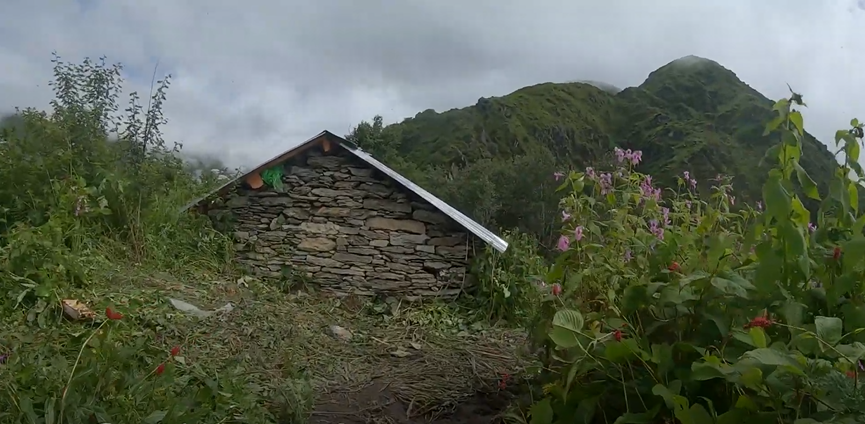
With the rise in elevation, Amul seemed to shuffle on all fours looking weary and fairly blown. “Gosh, it’s getting harder every minute. This must be the toughest trek of my life,” Amul bemoaned; his face read like an open book. Shishir and Bijay just smiled.
Setback
After something like three-and-a-half hours, they progressed to another Dharmashala, elevation: 4,200 m, time: 4 pm. Not a soul around. Even the last of the villagers had left them way behind the earlier day. The weather then, without so much as a warning, took a sudden shift.
Visibility dropped to near-zero on the crest of the hill as a dense hazy-grey fog rolled in. Shortly, a thin film of mist descended, which brought a palpable chill to the weather. They stopped to rest and recover their breath. It turned out, Bijay had a problem, a headache, but thankfully no hint of nausea. Not to be taken lightly, though, Shishir thought.
Must be the altitude, but fearing a possible symptom of AMS, Shishir decided to call it a day and camp there for the night. He asked Bijay to take plenty of water suspecting a case of dehydration. Lo and behold, it turns out they had run out of water.
The earlier Dharmashala had a water faucet next to it. Shishir looked around, but there was no sign of a tap. Just then, a soft rumble sounded, from the leaden grey sky, of impending rain, and before long Shishir felt a few drops on his cheeks. Got to do something about the water, he mused. It would be a blessing in disguise if it rained.
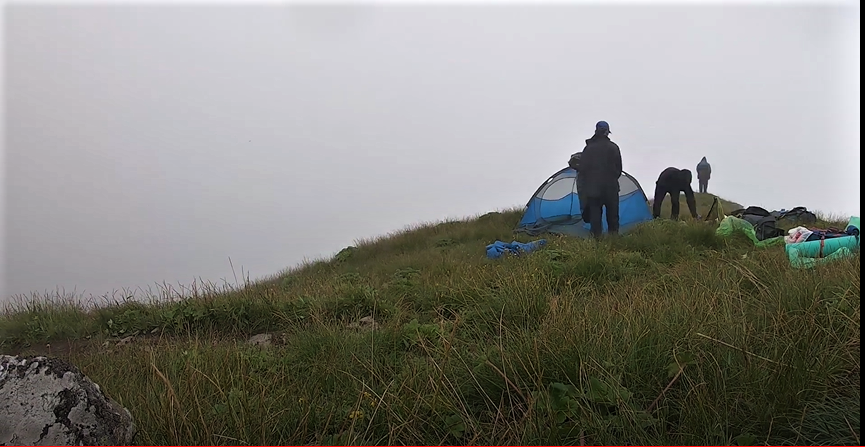
Hurriedly, Shishir dug a shallow pit next to the tent and spread out a plastic sheet in the hollow. He then weighed it down at the edges with rocks to prevent being blown away by the wind. The light pitter-patter turned into a slight drizzle when he was done. He retired to the tent satisfied.
Day Three: Nature’s bounty
The following day, the sunlit morning looked and felt rejuvenating. The sun shone brightly, and the weather was clear. Bijay appeared refreshed and cheerful, the next best thing. “Thanks to Surma Mai, I feel great today,” he said, and to Shishir’s great relief, he even went on to enthuse about the weather. And further to his delight, the hollow pit yielded about three liters of rainwater, more or less, to last the day.
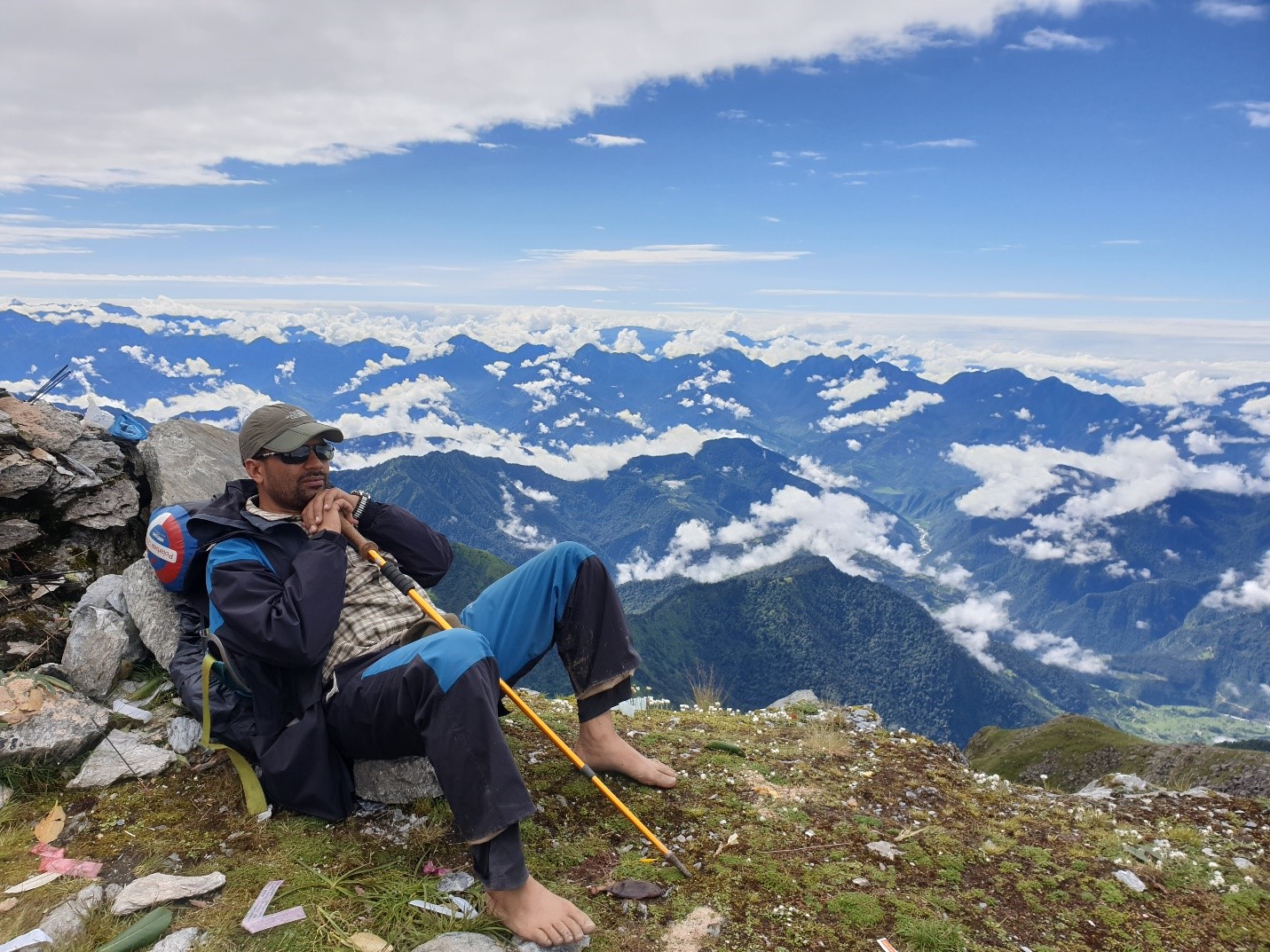
With every half-hour, the landscape seemed to take a dramatic shift. Way below a ridge, hovering clouds, intertwined with the hills that rolled out as far as the eyes travelled. After a lush mix of deciduous and coniferous flora below the 4,000-m mark, they were now weaving their path across a vast green moor with wildflowers in full bloom, a riot of pink and golden yellow against verdant wild grass, knee-high in some places.
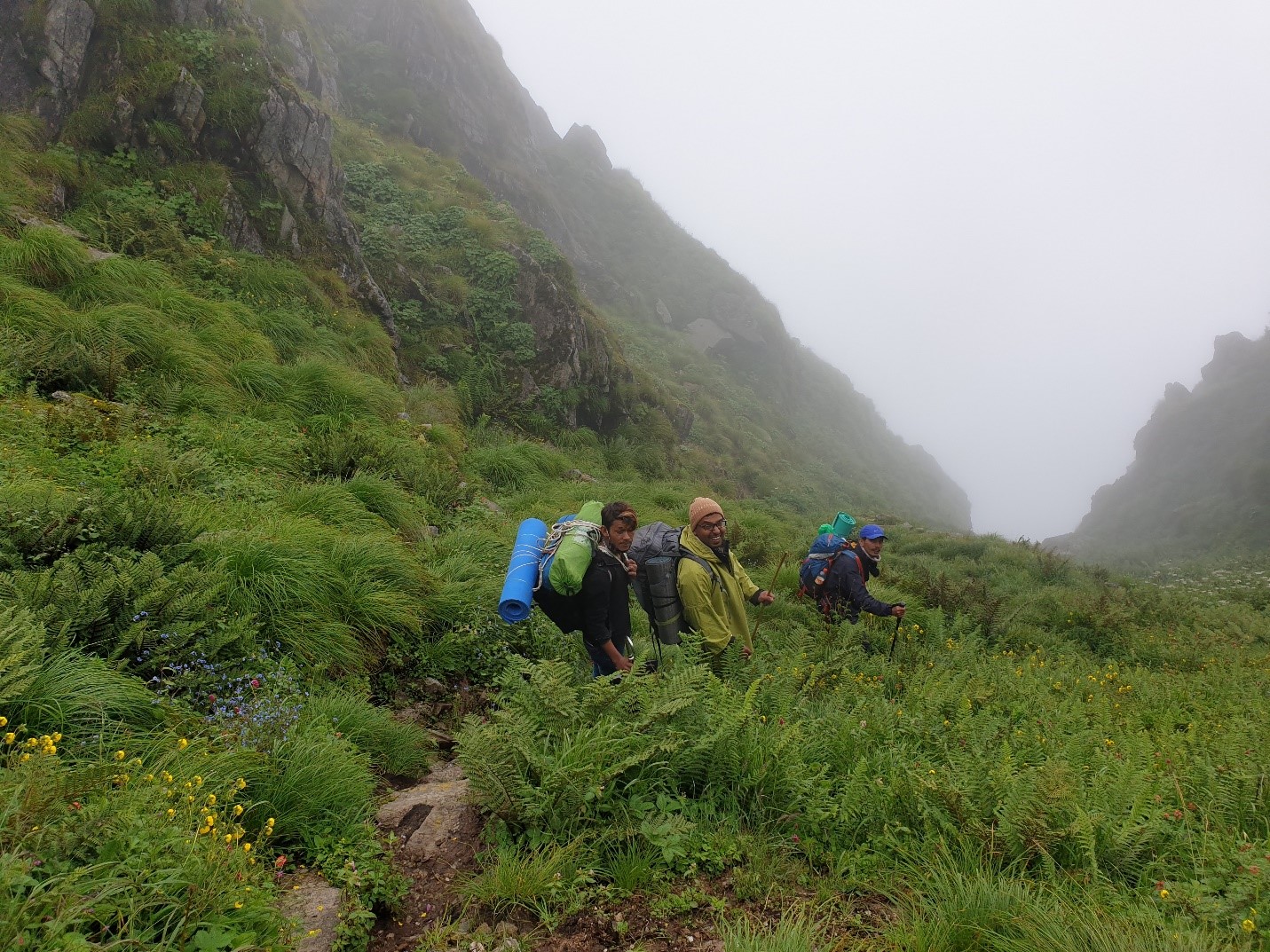
Alpine steppe
The tree-less terrain indicated, they were on the alpine steppe, a high altitude natural moorland, which is a part of Montane grassland and shrubland biome. The alpine zone begins above the tree-line and below the snowline in between 3,500 and 4,200 metres.
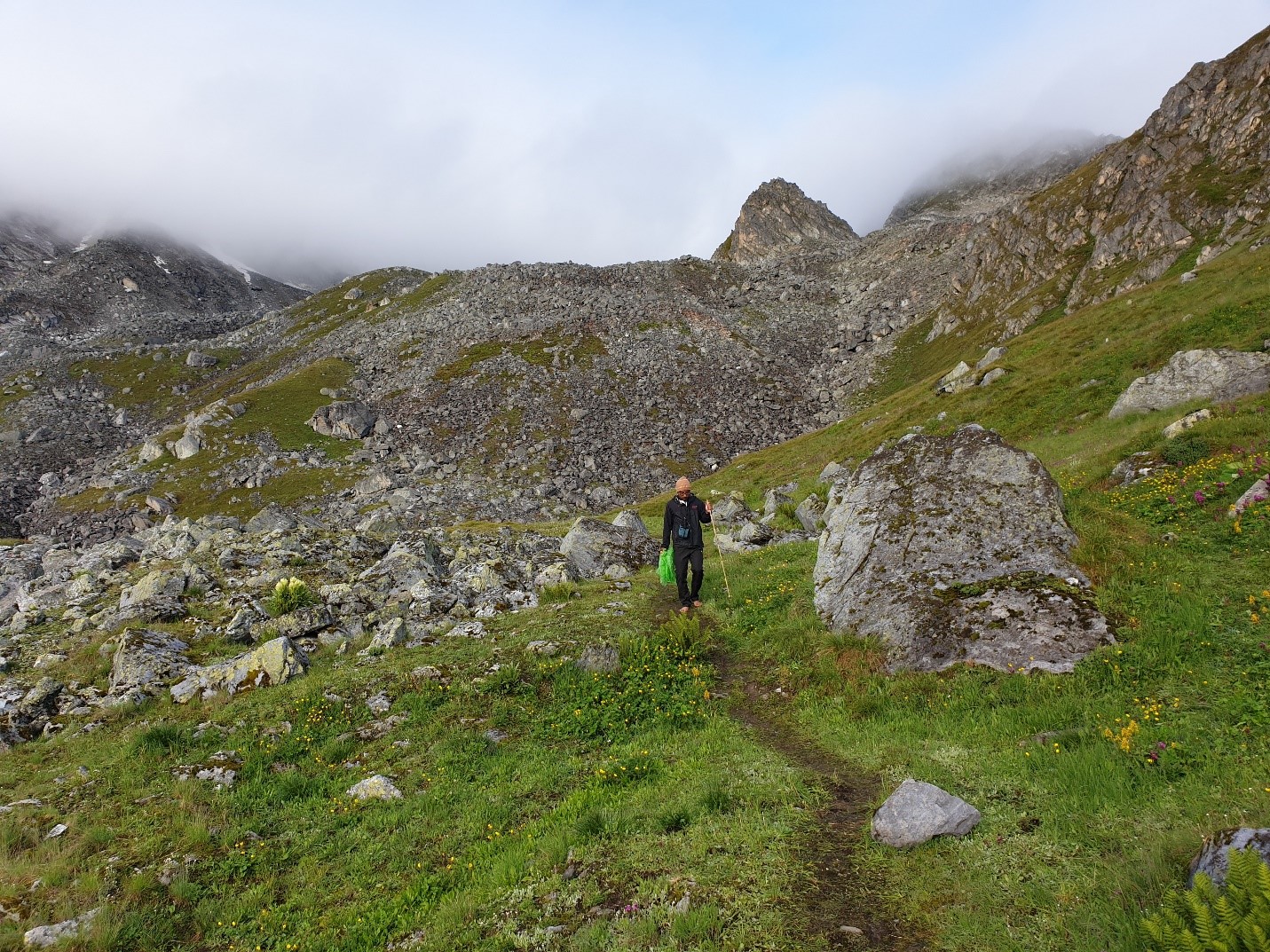
Alpine steppes found throughout the world, and the Himalayan region of Nepal among others in Asia, are considered unique ecosystems. They occur in both east and west Nepal after 3,500 m and above. Shishir learned later the grassland they treaded on happened to be the Yarsagumba (Ophiocordyceps sinensis) grounds.

Yarsaland
The entire Surma and surrounding villages, during harvest time, last of May through the end of June, are virtually emptied off people—men, women, boys, and even girls, leaving the entire locales to appear like ghost towns. Youngsters bunk school to scale formidable heights to pick the caterpillar fungus also dubbed the ‘biological gold.’
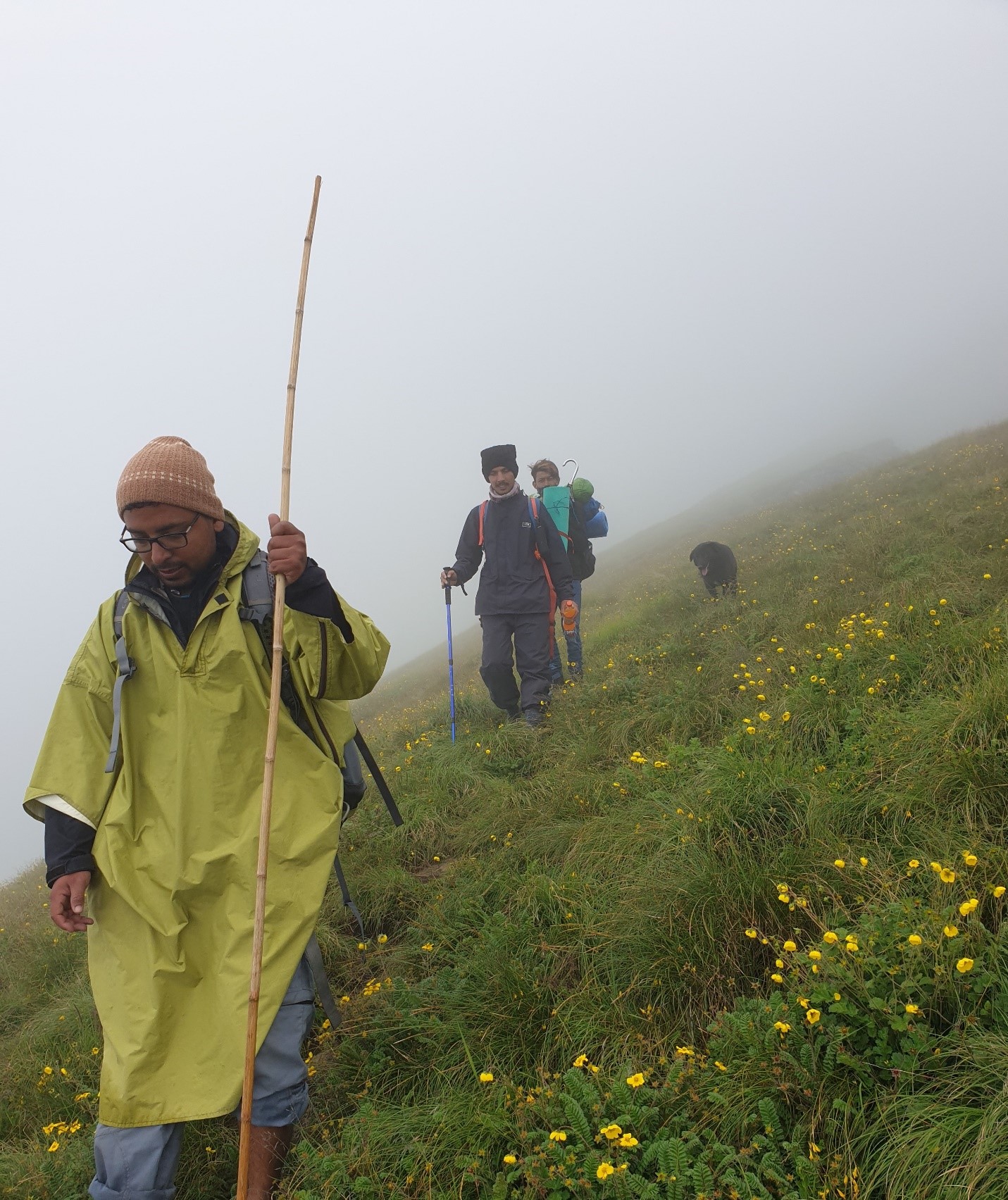
For everyone on the mass exodus to collect yarsagumba, it is like a pay-off period—windfall money that met their year’s expenses plus perks. “Young boys and girls from the village never ask their parents for pocket money all around the year. They make as much as three to seven lakh rupees every harvest time,” a local fellow revealed.
“Wow—that sounds great! Maybe we should also give it a try the forthcoming season,” quipped Shishir. The fellow sniggered in return, mightily amused. “Not by a long shot. It’s no picnic and is fraught with untold grave danger and perils. I wouldn’t advise it, not on your life,” he voiced. Shishir just smiled in return.
Biodiversity
The moorland with bracken and heather seemed never to end as they gained ground. Along with grass, the terrain seemed carpeted by a panoply of blooming flowers adding a romantic and idyllic setting found in postcard pictures.
The meadows of west highlands of Nepal in spring and pre-monsoon times turn into a carpet of flowers that include, Himalayan thimbleweed, Colorado columbine, alpine forget-me-not, primulas, buttercups, wild geraniums, Himalayan blue poppy, and many more.
Video and images, except other sources mentioned in captions, by Shishir Raj Joshi and Bijay Adhikari





